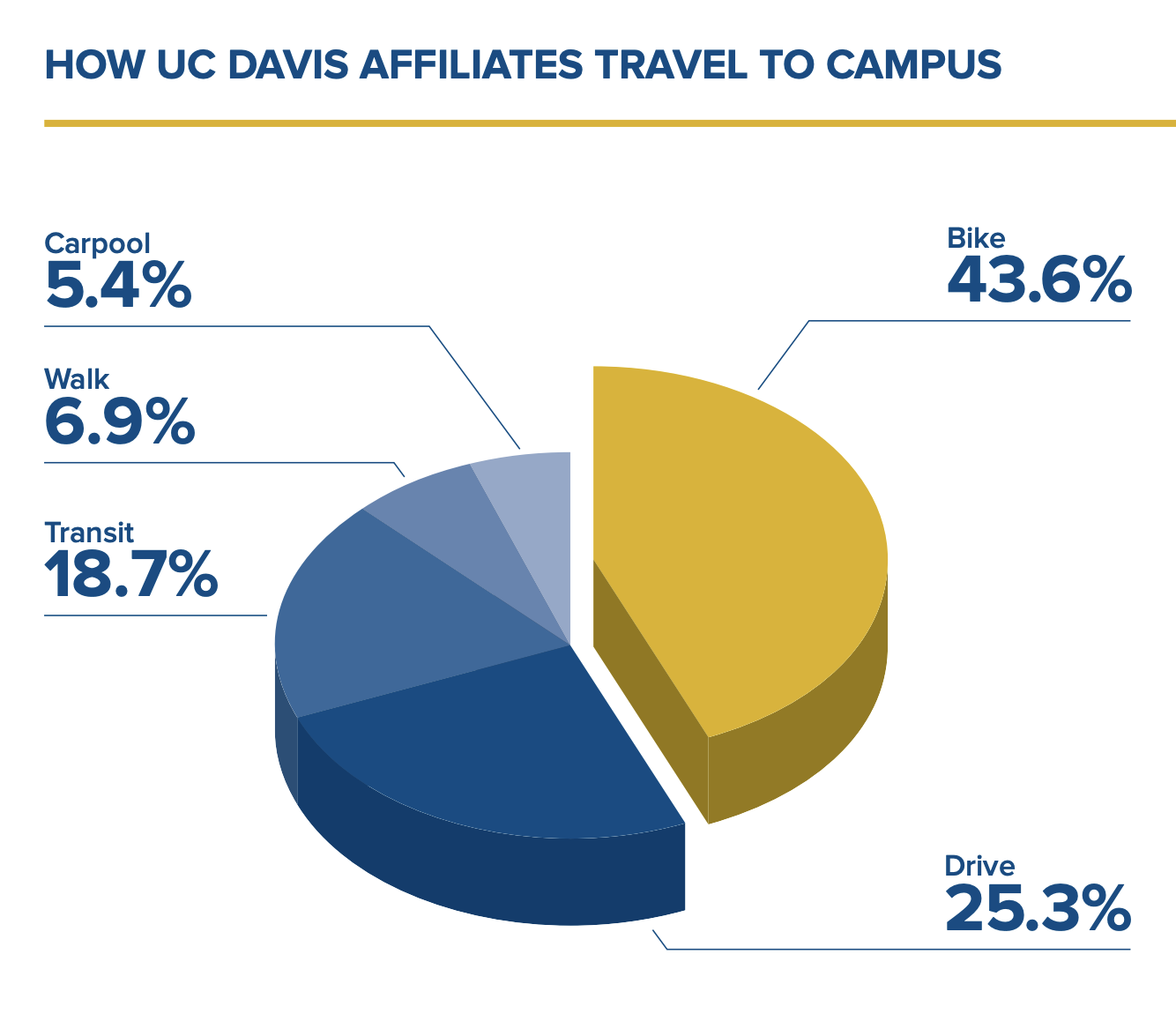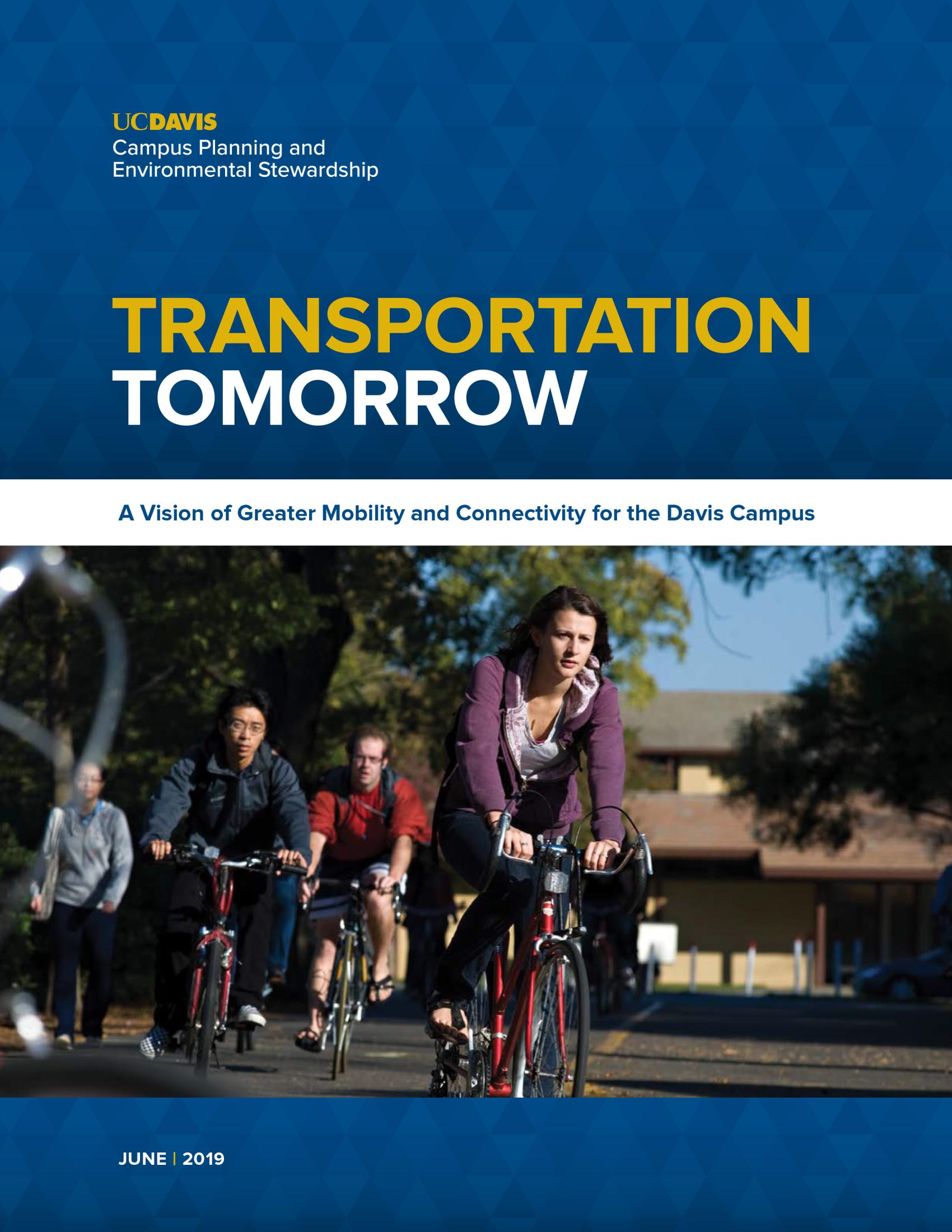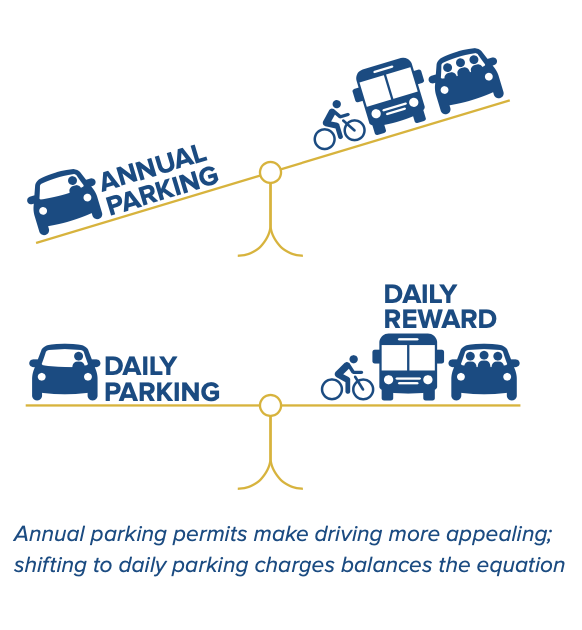Transportation Tomorrow: Sustainable Transportation Outlook
Transportation Services is moving toward a more sustainable future
The UC Sustainable Practices Policy declares that all campuses should decrease greenhouse gas emissions by reducing drive-alone commute trips by ten percent from 2015 levels by 2025. UC Davis takes this responsibility seriously and Transportation Services commits to doing our part in meeting or exceeding the UC Office of the President directive.
If UC Davis were to take no steps to decrease driving, but instead build enough parking to meet future demand, the overall costs would exceed $300 million. That cost would be passed on to the campus community, doubling or tripling the cost of a parking permit. Taking the long-view now is the time for Transportation Services to bolster our support for the health of our community and our environment. In order to do that, we must bolster the use of sustainable transportation modes and take a dynamic look at how we can best adapt our services to meet transportation demand and changing work-commute patterns.
Transportation Tomorrow is the framework to accomplish our goals and create that future. Click here to jump to the 10 recommendations to achieve the Transportation Tomorrow vision.
Planning for Transportation Tomorrow
A Vision of Greater Mobility and Connectivity for the Davis Campus
The Office of Campus Planning is responsible for the development and physical articulation of the campus transportation network to ensure that the built environment fosters more sustainable transportation choices for the campus community. Please see their Transportation Planning page for more information on Long Range Development Plans, Urban Design, Environmental Design, and Landscape Architecture.

About Transportation Planning
Sustainable Transportation Planning Study
 Transportation Services, with a consulting team, conducted a two-year planning study charting a new way towards a more sustainable future. The report — Transportation Tomorrow — summarizes this effort and the resulting top ten recommendations.
Transportation Services, with a consulting team, conducted a two-year planning study charting a new way towards a more sustainable future. The report — Transportation Tomorrow — summarizes this effort and the resulting top ten recommendations.
Historically, UC Davis invested in parking infrastructure to keep pace with the demand for parking spaces. With the potential growth in the campus population as represented in the 2018 Long Range Development Plan, this historical approach poses significant risks, both financially and environmentally. Any investment in parking infrastructure, especially investments that are debt financed over a thirty-year period, are tremendously risky.
Why should we own thirty years of debt for a parking structure that could be vacant in ten years?
Rather than invest in costly physical infrastructure that may be obsolete as mobility patterns shift due to emerging technologies like autonomous vehicles, we want to double down on our legacy of sustainable transportation and move towards an even more sustainable future.
Daily Rates vs. Annual Permit
Commute patterns are changing and Transportation Services (TS) is adapting operations in a way that can better serve campus and Aggies with flexible work and class schedules. Introducing a daily parking option allows for the campus community to pay for parking as they need. You pay for the days you park, not for the days you don’t.

Daily rates for parking gives people a way to pay only for the parking they need, rather than having to pay for year or month at a time (whether they need it or not.) Today’s ‘unlimited’ parking permits are much cheaper than paying per use. It is therefore not a surprise that most people choose the bulk discount. By converting all parking to a daily charge, UC Davis will offer affiliates the ability to drive when they need and save money when they don’t.
Daily parking, combined with incentives and a commute platform, create a unified Mobility Marketplace for UC Davis. Rather than being locked into a one mode, users can choose the best way to come to campus each day.
Coming January 1, 2021
- STUDENTS - Daily Rates Begin on January 1, 2021
Daily parking rates take effect for students in C ($3/day) and L ($2/day) permit areas and may be paid for through the ParkMobile app. Monthly parking permits will no longer be available for students. -
EMPLOYEES - Daily Rates Begin on July 1, 2021
Daily parking rates take effect for employees in C ($3/day) and L ($2/day) permit areas and may be paid for through the ParkMobile app. (Pricing for daily A permit areas is still under review.) Monthly parking permits will no longer be available for employees.

 NOTE: While many of the 10 recommended steps that came from the
NOTE: While many of the 10 recommended steps that came from the